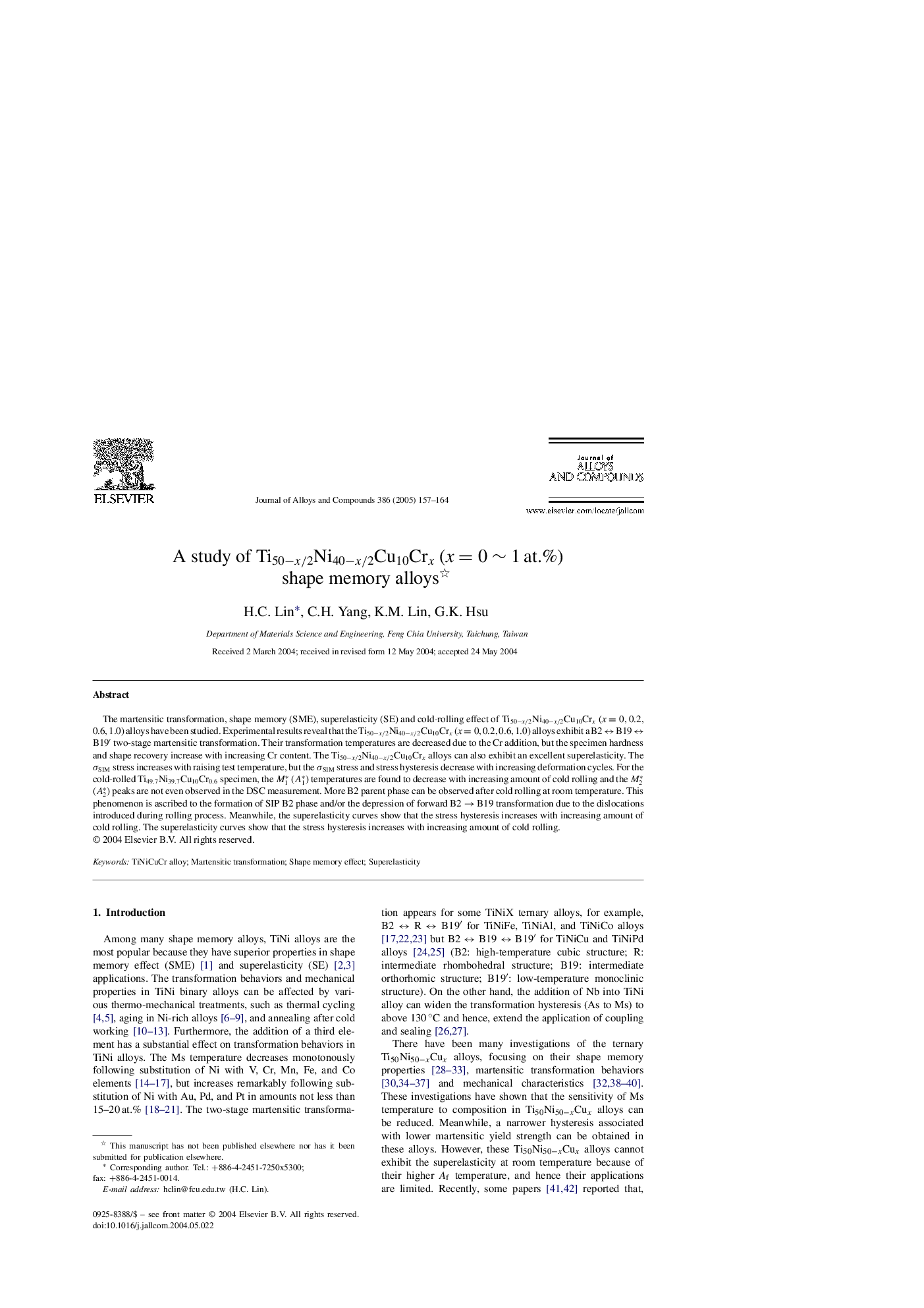| Article ID | Journal | Published Year | Pages | File Type |
|---|---|---|---|---|
| 9804217 | Journal of Alloys and Compounds | 2005 | 8 Pages |
Abstract
The martensitic transformation, shape memory (SME), superelasticity (SE) and cold-rolling effect of Ti50âx/2Ni40âx/2Cu10Crx (x = 0, 0.2, 0.6, 1.0) alloys have been studied. Experimental results reveal that the Ti50âx/2Ni40âx/2Cu10Crx (x = 0, 0.2, 0.6, 1.0) alloys exhibit a B2 â B19 â B19â² two-stage martensitic transformation. Their transformation temperatures are decreased due to the Cr addition, but the specimen hardness and shape recovery increase with increasing Cr content. The Ti50âx/2Ni40âx/2Cu10Crx alloys can also exhibit an excellent superelasticity. The ÏSIM stress increases with raising test temperature, but the ÏSIM stress and stress hysteresis decrease with increasing deformation cycles. For the cold-rolled Ti49.7Ni39.7Cu10Cr0.6 specimen, the M1â (A1â) temperatures are found to decrease with increasing amount of cold rolling and the M2â (A2â) peaks are not even observed in the DSC measurement. More B2 parent phase can be observed after cold rolling at room temperature. This phenomenon is ascribed to the formation of SIP B2 phase and/or the depression of forward B2 â B19 transformation due to the dislocations introduced during rolling process. Meanwhile, the superelasticity curves show that the stress hysteresis increases with increasing amount of cold rolling. The superelasticity curves show that the stress hysteresis increases with increasing amount of cold rolling.
Related Topics
Physical Sciences and Engineering
Materials Science
Metals and Alloys
Authors
H.C. Lin, C.H. Yang, K.M. Lin, G.K. Hsu,
